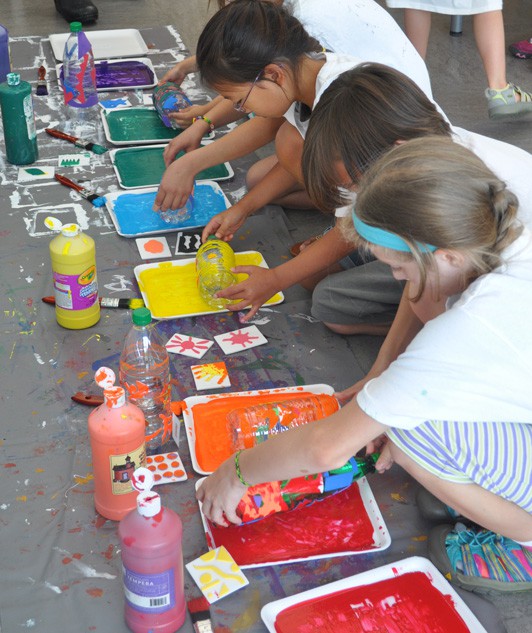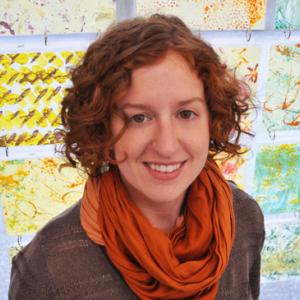Water Bottle Prints
Here’s a way to reuse the empty plastic beverage bottles we all accumulate, especially in these warm weather months. Turn those ordinary vessels into rollable printing tools and create your own beautiful patterned papers.
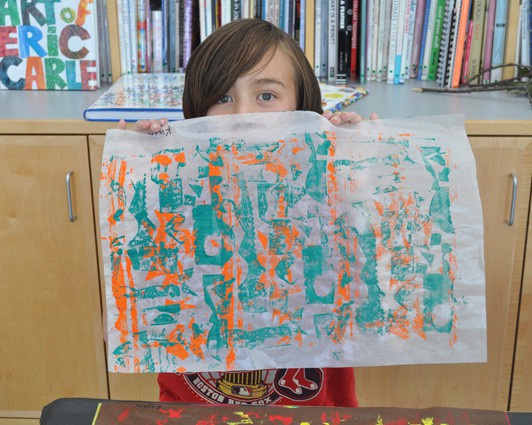
First, cut out designs and shapes with sticky-back foam and stick them all over the round sides of a clean plastic bottle. Our favorite bottles (yes, we have favorites) are clear and smooth 1 liter-sized seltzer and and water bottles, but experiment with any bottles you have available. Actually, many bottles already come with designs and patterns on the sides, so you could also try printing some bottles without any foam at all. We keep the caps screwed on to help keep the cylindrical shape while rolling. Without the cap the air will let out and the bottle may crumple when you try to press on it as you roll.
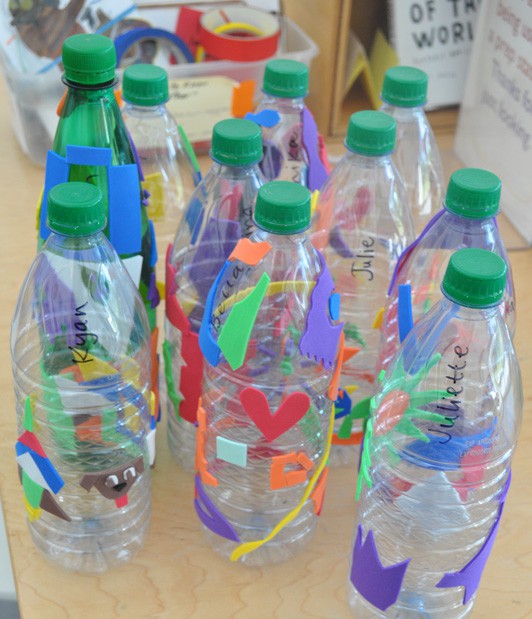
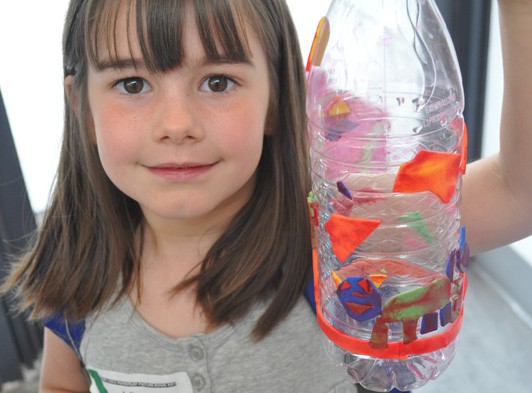
Stick to one layer of foam on your bottle, if multiple layers of foam are stuck on top of each other, any details probably won’t show up. It’s best to create a variety of single-layer shapes and patterns all over your bottle. Some patterns will turn out differently from expected when printed, which is all part of the fun! In the Studio we’ve used Folia paper as the background paper, available from School Specialty. It’s about as thick as a piece of tracing paper, is somewhat transparent, and comes in packs of bright colors. We cut the paper in half, to about 12”x 18” so it’s easier for children to work with at the table and carry to the drying area, but still a nice large working area. Any kind of paper that accepts paint will work for this activity, so use what you have available.
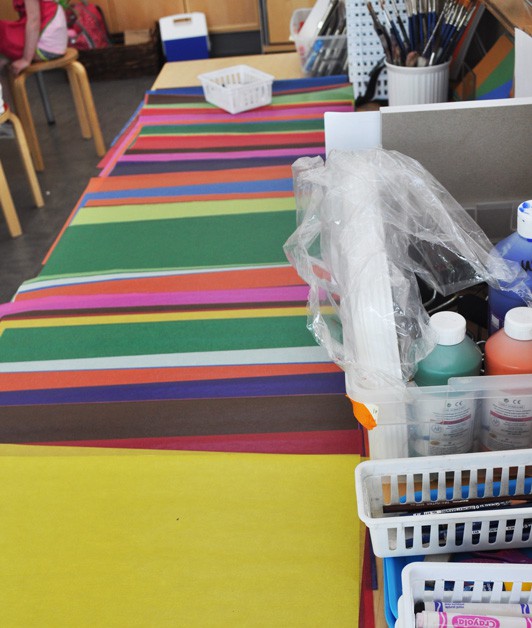
To prepare for this project we set out large vinyl tablecloths on the floor for the rolling area and to cover the tables for easy cleanup. We use many different colors of paint, but you could very easily use one or two colors for this project. Brush a thick layer of washable tempera paint in foam trays big enough for children to roll the bottles in the paint by themselves. In addition to the bottles, we’ll sometimes provide handmade stamps to add extra details to the papers. Learn how to Make Your Own Foam Stamp here.

If you are doing this project with a large group or classroom of children, assign each child a paint color. Their bottles will stay in that paint color tray, but they can rotate and use the different bottles and colors available. That way, everyone gets a variety of marks and colors on their papers. We also let kids choose the colors of their Folia papers that they want to use. During our 45-60 minute sessions children have time to make several papers each.
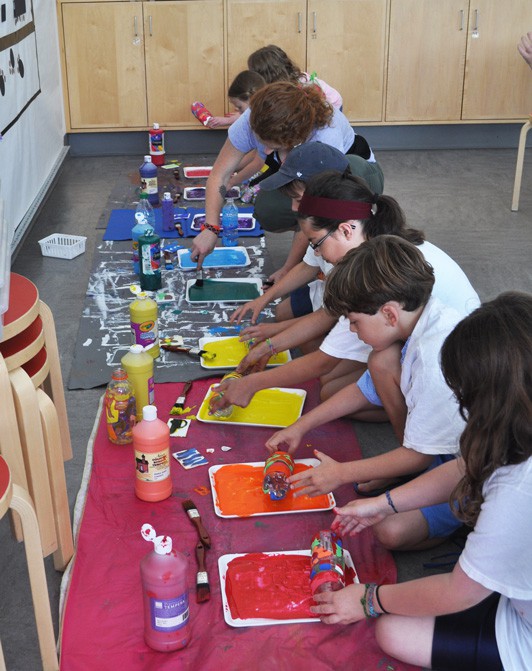
After rolling their bottle in the paint to cover as many of the foamy shapes as they can, they return to the tables and transfer the tempera paint onto their paper by rolling the bottle across the paper, in a rolling-pin motion. The neck and the bottom of the bottle should stay paint-free so it’s easy to roll without getting paint all over your hands. Paint on hands and clothes is normal for this project, so use a smock and work near a sink for easy cleanup.

I always demonstrate all of the steps before we begin so the children can work more independently.
- Choose a piece of paper and put it at your table. Write your name in one corner of your paper.
- Roll the bottle in the paint at the paint station
- Bring the bottle to your table to roll the bottle on your paper.
- Return the bottle to the paint tray for the next person
- Carry your paper over to the drying rack or clothes line.
- Go back to step 1.
In the beginning there are usually lots of questions, but after they roll on the paper they immediately pick up on the technique. We’ve taught children 5.5 - 11years old how to do this project. For younger children, expect to provide more hands-on assistance from an adult or older child.

When we can, we dry the papers in the sun on a clothes line; the paint dries more quickly than just on a rack or table. When the first layer of color is dry you can can roll a second or third layer of paint without the colors mixing. The papers really pop when there are multiple layers of pattern on them.

Here are a few works in progress.

Rolling a second color over her dry first layer.
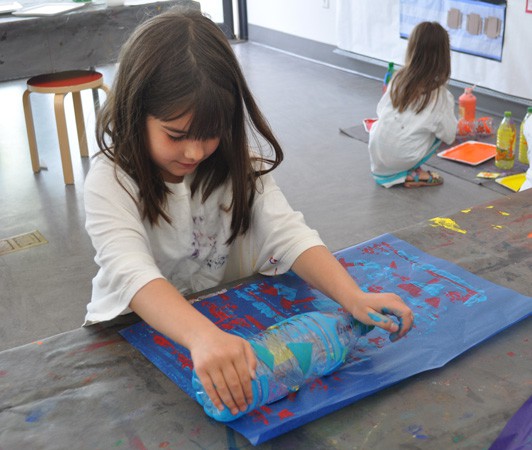
A few more finished papers.
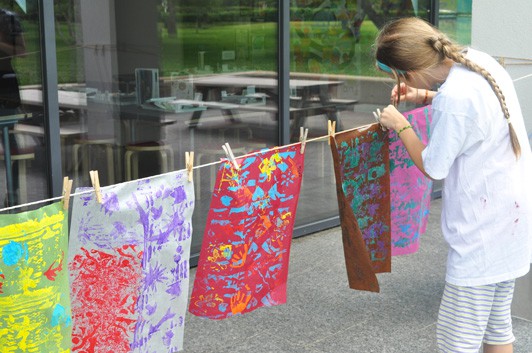
The papers in these photos we later cut out and turned into decorative covers for handmade books, but they can be used for cards, wrapping paper and of course, collage.
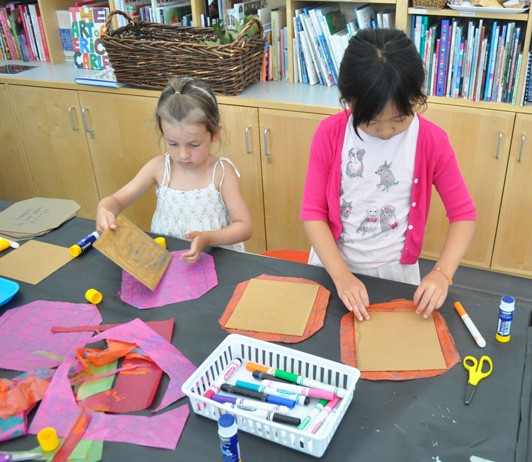
The materials are very easy to find and affordable for this activity (you can’t beat free!) and the patterned paper can be saved and used for so many future projects. Now get ‘rollin’!
